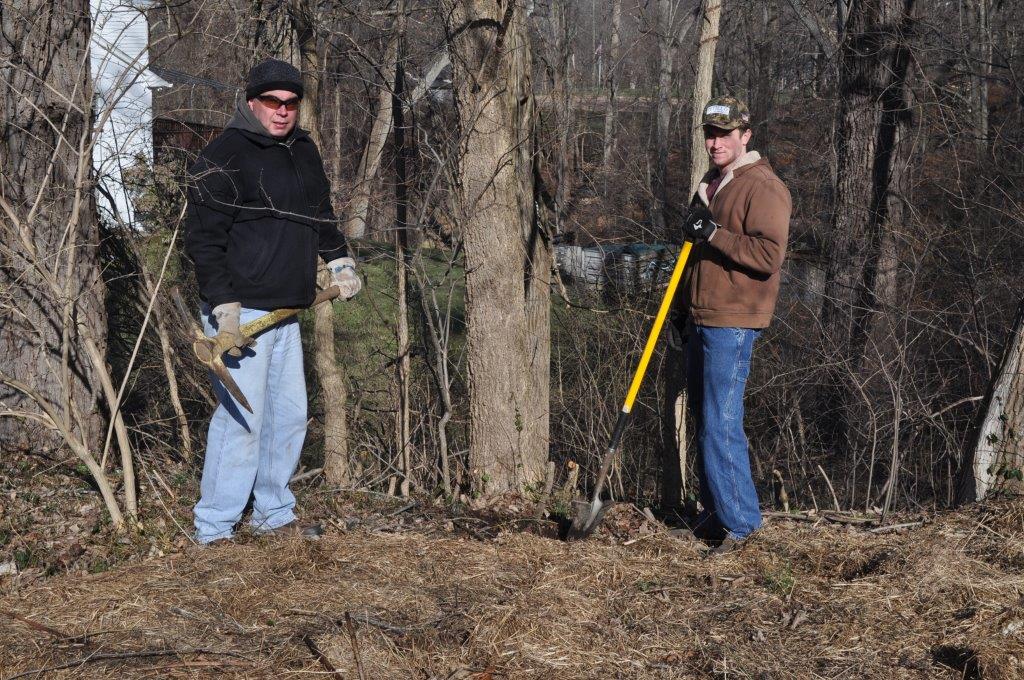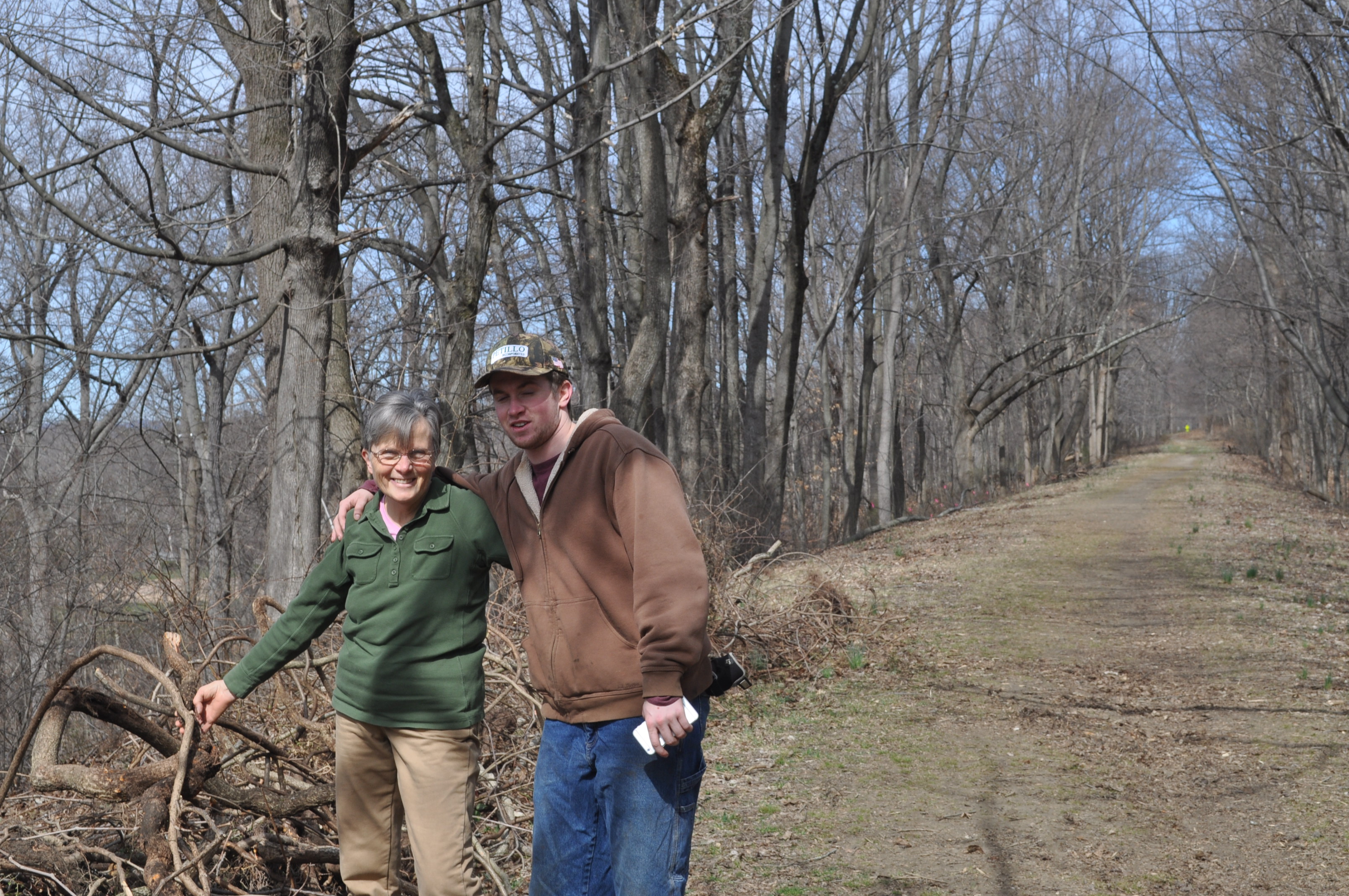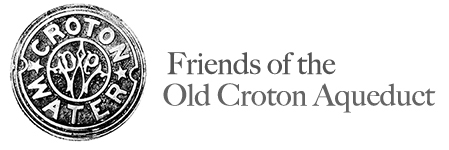

by Guest Blogger, Daria Gregg
People wonder out loud and to themselves why I spend good money and time taking out the invasives on my adopted section of the Old Croton Aqueduct.
Reasons are complicated and intertwine with other interests. When my husband died and I became semi-retired about fifteen years ago, I decided to do something I had been meaning to do for a long time, I volunteered as a Wildflower Guide at Teatown Lake Reservation. As I learned about the local fauna and lovely flowers that inhabit our Northeast woods, I came to appreciate the complex web of life they create, but not understood by most of us, because we have been too busy making a living or enjoying the numerous distractions of modern life.
Then I started volunteering down at the NY Botanical Garden (NYBG) in the Bronx and learned more about this web of life. The NYBG had decided to restore their own Native Forest to some state of its former self. For you see, it had been overcome by non-native invasive plants and was slowly dying.. Over the nine years I have been walking the trails in this Forest I have seen the removal of the invasive plants, but then when these were thoroughly removed, they were replaced with native plants. Remember I had high standards for comparison—Wildflower Island that has been managed since the 1960’s. The Bronx ‘s Forest had been much more impacted by people’s feet compacting the soil and by the nearby industrial pollution, but I was watched year by year the Forest was regaining its health and I observed the return of wildlife. Every Saturday morning there are birding forays, and the diversity of birds seen over the year is amazing and partially due to the enriched habitat the Forest provides.
So I started learning more about the role that invasives are playing in the demise of our local forests with the help of their four-legged accomplices, deer. Deer make restoration difficult in our area because they do not eat the invasives and love most of our natives. But, I am not one to be stopped by a difficult situation. I decided to adopt a section of the Aqueduct that I walk regularly and see if I could make a difference locally. This section did not seem too overwhelmed with invasive plants and I thought I could do it with the physical help of some local hired hands. They needed the extra money and I needed their strength. I had the knowhow and they had the stronger muscles.
All last summer, most Saturday morning were spent taking out invasives, but I found that the more we took out, the more I saw. This is turning into a three year project, but we have made good progress. It takes at least three years, because even if you take out the larger plant, it will probably come back in a smaller form because of the seedbank and roots left in the soil. You need to keep pulling small plants as they return, but there will be fewer each year. Now into the second year, I am planning on some replanting. This is where some reading and asking experts helps. You must look at the habitat you plan to restore. Is it shady, is it wet, is it dry, is it steep, is it sunny. If you are a gardener, you know the drill. Then you will try to find a deer resistant native to plant in that spot. Watch it and nurture it as you would a child until it can make it on its own. Natives usually do not prefer fertilizers, they just want the right spot for their needs. You may still have to protect them from deer while they are young and tender, but with your help, you will be doing your part to restore our local habitat and increase the bird habitat and diversity along our beloved Aqueduct.
Did you know that there is better spring birding in NYC’s Central Park than in Westchester County? Why? Because we no longer have enough native plants with their accompanying insect populations to sustain the birds migrating from Central and South America.
I urge you to adopt a section of the Aqueduct you love. Either work on it yourself or hire someone to help you. As a master gardener pointed out to me, we are now creating a less wild place, and because of the invasive nature of some plants, it will need to be managed yearly—though less and less intensively as the years go by. In the lower sections of the Aqueduct, just taking out the invasive plants so they don’t invade your yards will be your objective. In the wilder sections north of Ossining, you will be helping restore the forest sections along this portion of the Aqueduct. Vines are especially destructive, since their added weight eventually takes down our beloved trees. Of course one has to obtain permission from and coordinate with Steven Oakes, the Historic Site Manager of the Aqueduct, to do the invasive work, and then to have some of the material removed mowed and chipped by the State Parks Crew. I will consult with him when I begin the restoration efforts with native plants. You are welcome to contact me for mentoring and advice about adopting a section or to join me in my efforts in Ossining on Saturday mornings: Dariaweb@Verizon.net

